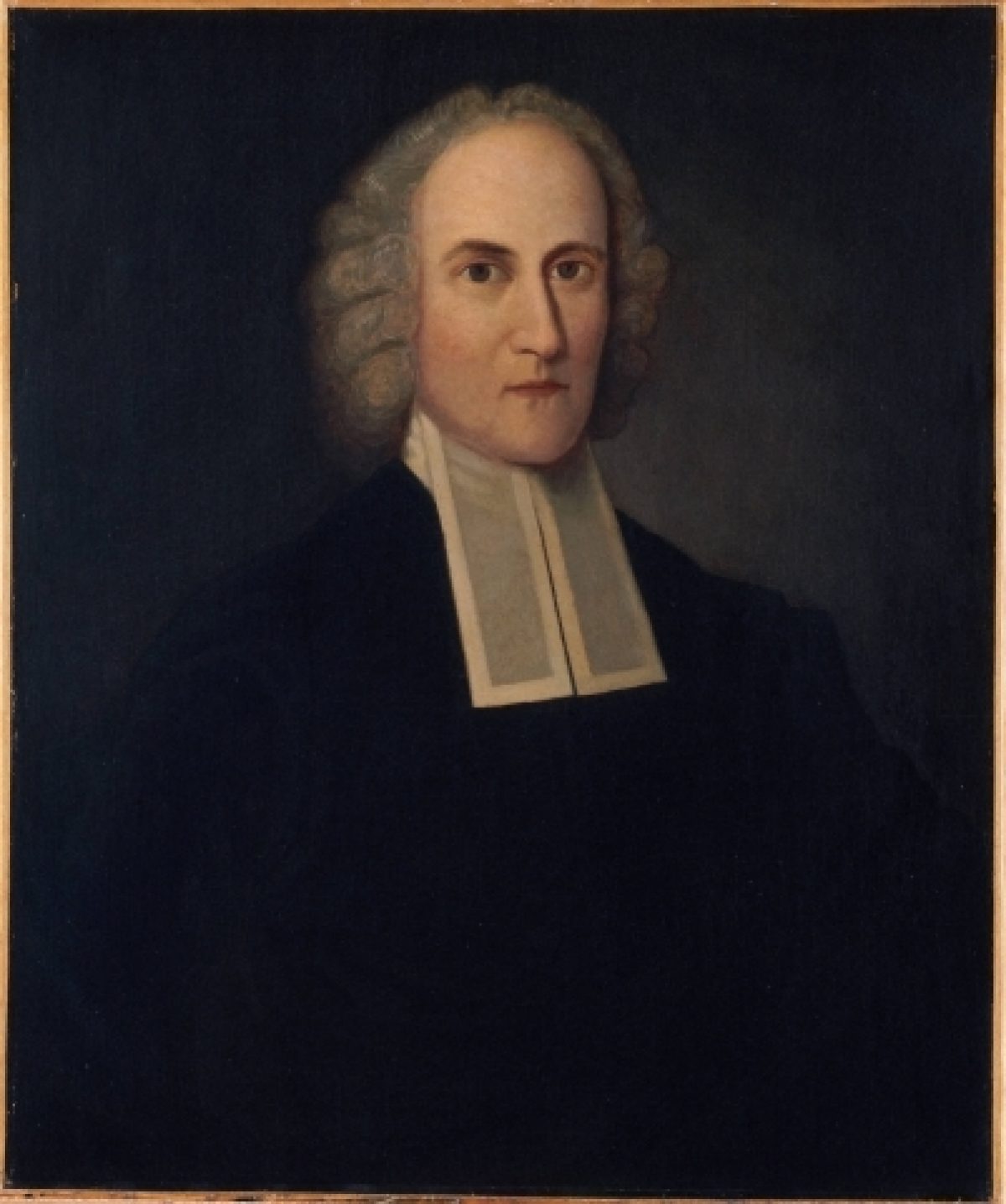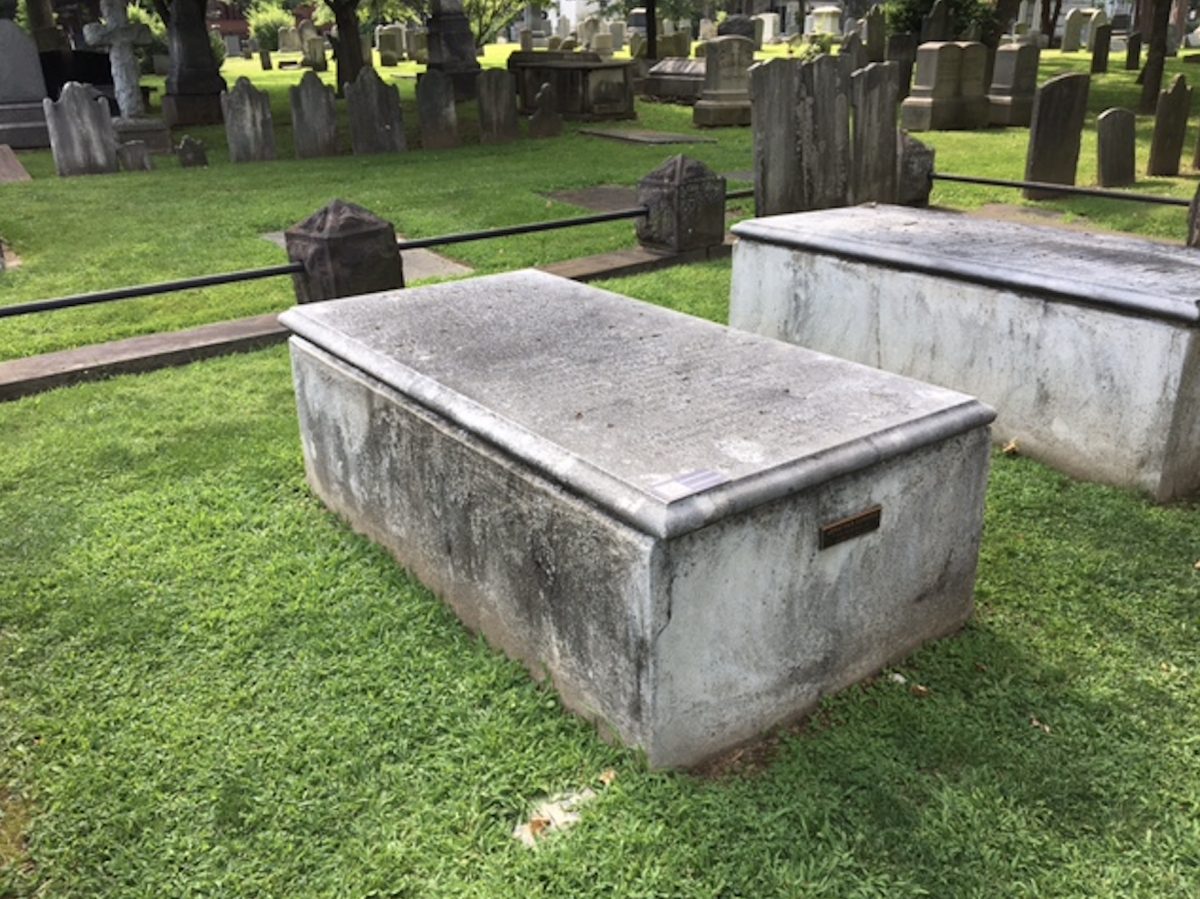Introduction
The Princeton president with the shortest tenure was also one of the most famous in the school’s history. Theologian Jonathan Edwards served as president of what was then the College of New Jersey for only 35 days in 1758 before succumbing to smallpox. Yet the renowned minister’s brief association with Princeton illustrates how the major intellectual currents of colonial America permeated campus. Furthermore, the ambivalence Edwards expressed toward slavery—even as he engaged in the practice throughout his adult life—illustrates how Princeton’s leaders recognized but failed to confront the moral abomination of slavery in the college’s early years.
Religious Influence
Patriarchal authority organized the world in which Jonathan Edwards was raised. The future Princeton president, born in Windsor, Connecticut, in 1703, belonged to a family whose men held significant social and religious influence in the Connecticut River Valley. Edwards’ father Timothy was a Congregationalist minister in Windsor, and his maternal grandfather, the Reverend Solomon Stoddard, led the Congregational church in Northampton, Massachusetts, 40 miles to the north. In Edwards’s family and colonial North America more generally, white men exercised authority over dependent wives, children, servants, and enslaved Africans and Native Americans. Young Edwards’ nuclear family owned a slave, as did the households of many New England clergymen. Ministers often purchased slaves to signal their elevated social status, as a means of earning supplemental income by renting out the enslaved person’s labor, and to compensate for the fact that clergy engaged in less physical labor at home than other patriarchs.[1]
Edwards entered Yale College in 1716, before his thirteenth birthday, and eventually followed his father and grandfather into the clergy. In 1726 he began serving as an assistant to his grandfather at the Congregational church in Northampton and was ordained the next year. In 1729 Solomon Stoddard died, leaving his twenty-six-year-old grandson in charge of a vibrant church in the most important town in western Massachusetts.[2] In Northampton, Edwards earned a reputation as an exceptional writer and preacher— helping spur the outbreak of Protestant revivalism known as the Great Awakening.
In the 1730s and 1740s, waves of religious enthusiasm swept the Connecticut River Valley and other parts of New England. During the Great Awakening, churchgoers renewed and deepened their Christian faith under the influence of powerful, emotionally driven sermons. Edwards’s Calvinist theology stressed the total sovereignty of God and the urgent need for all people to gain salvation and thus avoid eternal damnation. Like other leading evangelists of the Great Awakening, he stressed a personal, experiential Christianity that led followers to deeper religious devotion and moral reform. At the start of Northampton’s 1734-1735 revival, he wrote that the town “never was so full of Love, nor so full of joy.”[3]
While other preachers of the Great Awakening reached larger audiences through extensive travel, Edwards’ influence on the revivals and Christian thought more broadly emanated from his pen and the pulpits of nearby churches. His 1741 sermon “Sinners in the Hands of an Angry God” was one of the most famous exhortations of the revival period. And in widely circulated works like A Faithful Narrative of the Surprising Work of God and The Distinguishing Marks of a Work of the Spirit of God, Edwards provided the theological foundation for the “New Light” clergy who embraced the Great Awakening.[4]
Edwards and Slavery
While Edwards saved souls, he also established a household of his own: he and his wife Sarah had eleven children. Like his birth family, Edwards maintained the large household in part through the labor of enslaved people. In 1731, Edwards visited Newport, Rhode Island, where he purchased Venus, a “Negro girl” estimated to be 14 years old.[5] Records also indicate that Edwards owned a “Negro boy,” Titus, and a second female slave named Leah—although historians are uncertain as to whether the family simply gave Venus a biblical name.[6] In 1740, Edwards and his wife co-signed a legal guarantee of financial support for two slaves freed in the will of Sarah Edwards’ stepmother.[7] For New Englanders of their elite status, the Edwardses’ participation in the slave trade and slave ownership was unexceptional. One scholar notes that British colonists like Edwards often justified slavery as “an extension of long-accepted practices of servitude and dependency”—such as the dependant status of wives, children, and indentured servants.[8] Such rationalizations for slave ownership were convenient, considering that the economy of New England depended heavily on its links to the Atlantic slave trade.
Edwards preached and wrote little on the subject of slavery, but traces of his views remain. In 1741, a conflict over slavery in a congregation near Northampton came before a local council of ministers. The clerical body tasked Edwards with drafting a response to the arguments of church members who denounced their minister for owning a slave. In his response, Edwards defended the authority of his fellow cleric and accused his congregants of hypocrisy. The critics were not “immediate partakers” of the fruits of slavery, Edwards argued, but like most New Englanders “they may have their slaves at next step”—meaning the critics indirectly benefited from the institution.[9]

Jonathan Edwards's 1741 draft letter on slavery, in which he defends the practice of owning slaves.
View Primary Sources
Yet Edwards also condemned the cruelty of the slave trade, invoking scripture to do so. He acknowledged that God had permitted the Israelites to capture and enslave the Canaanites but argued that this represented only one specific instance. Christians could not, Edwards contended, transform a “special” dispensation into an “Established Rule.”[10] The document more generally reveals Edwards’ belief in the spiritual—but not earthly—equality of Europeans and Africans, an attitude reflected in his efforts to convert slaves to Christianity.[11] Christ, Edwards argued, “[c]ondescends to take notice of serv[a]nts & people of all nations” and “Condescends to poor negroes.”[12] In his ministerial role, Edwards acted on that principle by admitting nine Africans to the Northampton congregation as full communicants, including the enslaved woman Leah. The church also admitted Native American members.[13]
Native Americans became the focus of Edwards’ ministry following his tenure in Northampton, where a sharp conflict with a faction of congregants over the terms of full membership led to his departure in 1750. (Edwards had pushed back against the more liberal membership policies of his grandfather.) Edwards moved farther west to the town of Stockbridge, to serve as pastor and missionary to Mahican and Mohawk Indians.
Princeton President
In 1757, the Board of Trustees at the College of New Jersey (now Princeton University) asked Edwards to succeed his recently deceased son-in-law, Aaron Burr Sr., as its president. Edwards hesitated. “I am much in doubt whether I am called to undertake the business,” he wrote the board, citing “many inconveniences and great detriment” that would accompany his acceptance of the offer.[14] At the age of 54, he suffered from ill health, possibly related to poor digestion. Edwards also worried about the financial burden of moving to Princeton, fearing that he would suffer monetary losses as he had when he relocated from Northampton to Stockbridge. Edwards negotiated with the board, asking for fewer teaching responsibilities than his predecessor in order to allow himself the time to complete two major theological works. Though the board agreed, Edwards remained uncertain and placed the matter before the local council of ministers in the Stockbridge area. They recommended that he take the Princeton position, a judgment Edwards then accepted as God’s will.[15]
Edwards’ time in Princeton would be exceedingly brief. He arrived in January 1758 and was officially installed as president on February 16th, moving into the President’s House with his family and, possibly, two slaves. A week later, Edwards had himself and several family members inoculated against smallpox in response to an outbreak in the area. The new president soon became gravely ill with the virus and died on March 23rd. He is buried in Princeton Cemetery.
Edwards left a formidable legacy to subsequent generations of theologians, philosophers, and clergy. Yet he avoided a full reckoning with the institution of slavery, bequeathing a heavy moral burden to his descendants—a fact which Edwards’s own son recognized. As Jonathan Edwards Jr. (class of 1765), himself an esteemed theologian, wrote in 1791:
You … to whom the present blaze of light as to this subject has reached, cannot sin at so cheap a rate as our fathers.[16]
References
[1]
For this interpretation of New England clerical slaveholding and household labor I am indebted to Edwards’s biographer George Marsden. See George Marsden, Jonathan Edwards: A Life (New Haven, CT: Yale University Press, 2003), 20. On clergy renting out enslaved people, see Kenneth P. Minkema, “Jonathan Edwards on Slavery and the Slave Trade,” The William and Mary Quarterly, Vol. 54, No. 4 (Oct. 1997), 826.
⤴
[2]
On Edwards’ early years in the clergy and Northampton’s influence in New England, see Sydney E. Ahlstrom, A Religious History of the American People 2nd ed. (New Haven, CT: Yale University Press, 1972, 2004), 300.
⤴
[3]
Edwards to Benjamin Colman, as quoted in Ahlstrom, A Religious History of the American People, 282.
⤴
[4]
“New Lights” stood in contrast to “Old Lights” who opposed the Great Awakening and feared the emotionalism of its revival meetings. See “Edwards, Jonathan,” in Erwin Fahlbusch, et. al., eds., trans. Geoffrey Bromiley. The Encyclopedia of Christianity, Volume 2 (E-I) (Grand Rapids, MI: Wm. B. Eerdmans Publishing, 2001), 69.
⤴
[5]
“Receipt for Slave Venus,” reproduced in John E. Smith, Harry S. Stout, and Kenneth P. Minkema, eds., A Jonathan Edwards Reader (New Haven, CT: Yale University Press, 1995), 296-297.
⤴
[6]
On the enslaved Titus, see Minkema, “Jonathan Edwards on Slavery and the Slave Trade,” 825. On the question of Leah’s identity, see Marsden, Jonathan Edwards: A Life, 255.
⤴
[7]
Marsden, Jonathan Edwards: A Life, 255.
⤴
[9]
Minkema, “Jonathan Edwards on Slavery and the Slave Trade,” 826.
⤴
[11]
On Edwards’ belief in the spiritual equality of races, see Marsden, Jonathan Edwards: A Life, 258.
⤴
[12]
Minkema, “Jonathan Edwards on Slavery and the Slave Trade,” 829.
⤴
[13]
On the African communicants in Northampton, see Marsden, Jonathan Edwards: A Life, 258.
⤴
[14]
Letter from Edwards to the Trustees of the College of New Jersey, 19 October 1757, in John E. Smith, Harry S. Stout, and Kenneth P. Minkema, eds., A Jonathan Edwards Reader, 321.
⤴
[15]
For a discussion of Edwards’ agonizing over the invitation from the College of New Jersey, see Marsden, Jonathan Edwards: A Life, 430-431.
⤴
[16]
Jonathan Edwards Jr., as quoted in Craig B. Hollander and Martha A. Sandweiss, “Princeton and Slavery: Holding the Center,” Princeton & Slavery Project, accessed 16 October 2017, slavery.princeton.edu/princeton-and-slavery-holding-the-center.
⤴







